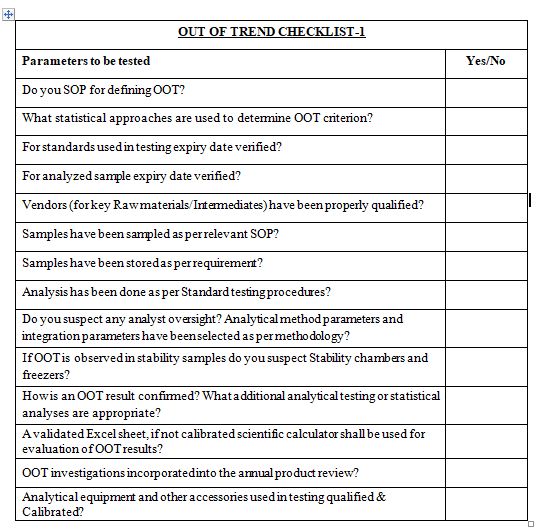Before implementing an OOT procedure, the management must define the OOT of interest. The approach for identifying an OOT depends on this definition. From historical data, two popular definitions of OOT co-exist:
A result is identified as OOT, if it is at odds/ incompatible (as per approved SOP) with previous test results for that batch (comparison within batch/Intra-batch study). This Approach is most popular.
A result is identified as OOT if the compiled result is not similar to the results that past stability studies generated at that same time station (comparison with other batches/Inter batch study).
Once management defines OOT and agreed upon the approach of identifying OOT, few relevant questions to be answered:
Key Questions:
- Is the OOT procedure intended for NDA stability studies, for commercial stability studies, or for both?
- What is the minimum amount of data required for compilation and to obtain reliable statistically relevant estimates?
- Whether analytical method used in stability study has been validated?
- What is the effect of primary and secondary packing material on the stability profile?
- Is the OOT compilation data updated after each new time station is collected?
- As more data become available for a drug substance or drug product, time intervals will be extended or reduced, after changes were made in the stability protocol?

